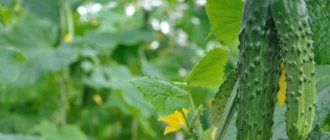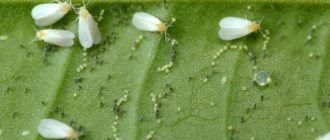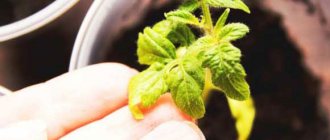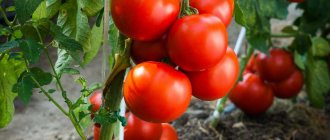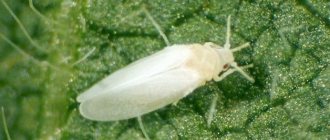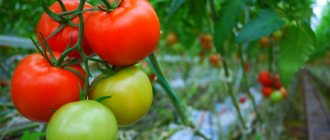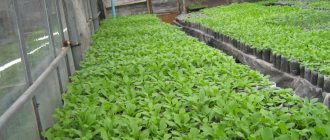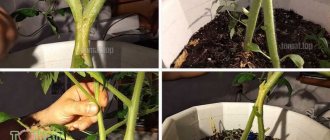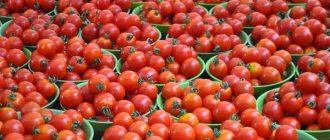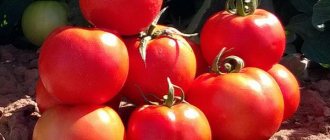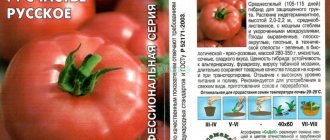Growing tomato seedlings for open ground begins in late February - early March. From the first days of emergence, seedlings require 12-14 hours of daylight. In the first days of spring, the total duration of daylight hours is 11 hours, of which 3 hours are twilight.
Seedlings get even less natural light in a city apartment. During the most critical period, the young tomato plant clearly lacks sunlight. The only way to grow strong, healthy seedlings is to organize artificial supplementary lighting.
Supplementary lighting and its importance for seedlings
For garden crops, regardless of age, illumination of 20-40 thousand lux is required. Even on a clear day in February-March, the illumination on the windowsill does not exceed 5 thousand lux. This imbalance continues until the end of May. The seedlings stretch out and grow frail. In the future, they find it difficult to tolerate transplantation to a permanent place, and the acclimatization process is delayed.
Young plants need light vitally. All components of the spectrum affect the growing tomato seedling.
- Red light promotes the formation of the root system, flowering and fruiting.
- Blue rays stimulate cell division and inhibit stem growth - the seedlings do not stretch, but grow strong.
- The yellow, orange and green components of the spectrum do not have any specific effect, only on photosynthesis.
In combination, light stimulates the development and growth of seedlings, provides energy for photosynthesis and a general strengthening effect.
Rules for choosing a lamp with ultraviolet radiation
Natural sunlight is important for plant growth and development. Without it, future seedlings become pale, lethargic, susceptible to illnesses and pests. To get strong, healthy seedlings, you need to make up for the lighting deficiency in time by choosing the appropriate lamp. Their range is large, and before buying a suitable device, it is worth considering:
- needs of young shoots;
- ergonomics of the lamp at home;
- savings opportunity and energy efficiency.
Supplemental lighting is very important for seedlings and young plants
It is impossible to completely replace the sun with artificial lighting. The gardener’s task in this case is to select a color spectrum as close as possible to natural radiation. In nature, the following sequence of colors is distinguished:
- infrared, invisible to humans - has bactericidal properties, promotes the development of lush green mass;
- red – optimizes chlorophyll production, stimulates germination, flowering, foliage development;
- orange – accelerates the process of fruit ripening;
- yellow and green - important as components of lighting, reflected from foliage;
- blue and dark blue - affect photosynthesis, root development, thanks to them the shoots do not stretch;
- ultraviolet, invisible to the human eye, helps fight diseases and promotes the development of the above-ground part of seedlings.
Each of the colors visible to humans has its own temperature, which increases gradually. The minimum is for red, 1500 K, the maximum is for violet, 8000 K. For good development of seedlings, you need light with a temperature of 1500 and 6000-7000 K. Red and blue-blue correspond to these indicators. In the first few weeks, more blue is needed for reliable rooting of sprouts; after transplanting, an equal amount of both colors is required.
Lamps for tomato seedlings - advantages and disadvantages
Conventional household lighting is not the best choice for illuminating seedlings. The cells of a growing seedling react sensitively to the border regions of the spectrum - “infrared-red” and “blue-ultraviolet”.
In addition to the characteristics of the emitted spectrum, when choosing a lamp for seedlings, you should take into account the efficiency of the lighting device. It is necessary to calculate in advance the costs of additional illumination: every day for 4 hours.
| Lamp type | Characteristics of the emission spectrum | Advantages | Flaws |
| Gas discharge (fluorescent lamps) | A full range of | Economical, thermal radiation is minimal | To connect the lamps you need a special ballast, the distance to the plant should be no more than 20 cm, a reflector is required |
| Phytolamps | A full range of | Compact, durable, economical and environmentally friendly. The mirror layer inside the lamp increases light output - the device illuminates the seedlings, without excessive overheating, | Color that is unpleasant to humans - a protective screen is needed |
| Light-emitting diode (LED) | The spectrum can be selected for each growth stage independently | Low energy consumption, do not overheat the soil, you can choose a spectral solution depending on the stage of seedling growth. | Purple color, unpleasant to the human eye (useful for seedlings) |
| Sodium metal halide | "Warm" spectrum zone | Cost-effective, simple rules of use, built-in reflector increases the efficiency of use | Price of the device, no blue spectrum |
Artificial lighting options for plants
LED Strip Light
Popular models
1. For my first experiments with lighting, I used a fluorescent lamp with a power of 36 W and a luminous flux of 3,350 lm, which is on average higher than that of an incandescent lamp of 200 W. This type of lamp is considered the brightest of its kind.
2-3. To install LEDs yourself, you will need aluminum spike boards, thermal conductive grease KPT and solder paste.
4. The boards were attached to the profile pipe of the radiator using rivets. The gap between the board and the pipe was coated with thermally conductive grease.
5. Assembled “garlands” of LEDs. The top one used a 90 cm solid board. The middle one consists of boards for 3 LEDs. The bottom one is made up of separate boards.
6. Power supply for LED backlight.
7. Ready installation for two lamps.
8. The height of the lamps is adjusted by turning the wooden knob.
9. Backlight in action. The shadow of the central glass with plants shows the approximate radius of illumination by one LED. Blue LEDs are brighter, so the circle is more noticeable.
10. My main “plantation” of seedlings is 8 in the basement immediately after germination. The dimensions of the nursery are 0.7 x 3 m. The LED backlight emits a very bright crimson light, which is unpleasant to the eyes. When watering, the backlight has to be turned off.
11. Judging by the leaves and shape of the plants, it seems that the species are different. But these are plants of the same variety, grown on a southern windowsill without lighting (left) and in a dark basement under LED lighting (right).
Rice. 1. Graph of light energy absorption by chlorophyll depending on wavelength.
Tags: apartment, seedlings, light About the author: admin4ik
Which lamps are useless and harmful for illumination?
Young tomato sprouts need blue-violet and red rays - the light flux of this spectrum stimulates root formation and forms strong, healthy seedlings.
An ordinary incandescent lamp emits predominantly yellow light and is of little use for illuminating tomato seedlings.
That's not all:
- An incandescent lamp converts only 5% of electricity into visible light.
- 95% of the energy is converted into thermal radiation, which dries the soil in the seedling container.
- Excessive heat stimulates active growth of the stem. If there is a lag in the development of the root system, the seedlings turn out to be weak, elongated, and painful.
- It is not possible to correct the situation with fertilizing - the roots are too weak.
For any supplementary lighting system, heating must be controlled. If at the seedling level the heating from the lamps is imperceptible with the back of your hand, the distance is chosen correctly.
Common mistakes gardeners make
Most often, when additional illumination of tomato seedlings, gardeners make the following mistakes:
- If burns form on the foliage of seedlings, this means that the lighting fixtures are located too close to the seedlings.
- The foliage becomes faded and the shoots become elongated if the lamp is installed much higher than necessary or it has insufficient power.
- If the lighting fixtures are installed on the side, the shoots of the plants may bend towards the lamps. In this case, they must be moved upstairs.
- Using simple incandescent lamps for additional lighting does not give the desired effect, because their light is completely useless for plants.
Additional lighting system - how to make
Phytolamps, with their useful spectrum for illuminating a small number of seedlings, are not a cheap pleasure. At home, it’s easy to make your own supplementary lighting system from readily available elements.
The easiest way to assemble a system is from ready-made fluorescent lamps. The simplicity of the design will not cause any difficulties even for a beginner. Depending on the illuminated area, gas-discharge tubes are mounted on a rigid base with an interval of 10-15 cm in parallel.
It is advisable to use a substrate with a mirror layer - this increases the efficiency of additional illumination.
The entire structure is fixed above the shoots at a distance of approximately 10 cm. It is necessary to think in advance about ways to adjust the distance from the ground surface to the lighting system, special brackets or an adjustable suspension system. As the seedlings grow, the structure should be raised.
When is additional lighting needed?
There is an opinion that the need for increased light arises when 2-3 true leaves appear, and before that the sprouts need enough natural light. This is wrong. According to agronomists, emerging seedlings need regular lighting more than adult plants.
For peppers, eggplants, and tomatoes, daylight should last 8-12 hours a day. Green crops need 8-10 hours, slow-growing crops (for example, celery) need 12-16 hours.
No need to place plants in dark places
If the days are fine, additional lighting will only be needed in the morning and evening; in cloudy weather, maximum lighting is needed. Regardless of the type of lighting, the best place for seedlings is south-facing windows.
Important! Artificial light cannot fully replace sunlight, so on fine days you should move the seedlings to the balcony.
What do you need to know?
Early cultivation of tomato seedlings requires careful organization of the process. Tomato sprouts cannot expect solutions to technical and other problems.
- Even if you have a lamp system for a mini-garden, preference should be given to windows oriented to the south. No lamp can replace natural light.
- Additional illumination must be continued until the seedlings are planted in a permanent place, so you should worry about the possibility of adjusting the location of the light source in height.
- It is better to place the lighting panel directly above the plants.
- Reflective elements (mirrors, screens) have a softer, targeted effect than direct rays.
- The use of a reflector is doubly justified if a phytolamp is turned on for additional illumination.
- Any light surface, not necessarily mirror, can be used as reflective elements. Plain paper perfectly reflects and scatters light rays.
The need for additional lighting is determined very simply. If the eye does not detect the difference in illumination, then backlighting is not needed yet.
Why highlight seedlings?
Most tomato varieties have a fairly long growing season. That is why they are planted in the middle of winter, when the duration of daylight hours is still too short. In order for such plants to fully develop, special lighting is provided for the seedlings. With its help you can maintain optimal light conditions in winter.
If you refuse additional illumination of seedlings, certain problems may arise during cultivation. Due to insufficient light, tomato seedlings begin to stretch out their stems. Over time, elongated internodes appear on them.
This is due to the fact that in low light the process of photosynthesis begins to slow down in the bushes. If you don’t start lighting the seedlings in a timely manner, they will start to get sick.
Simple rules
To obtain strong and healthy seedlings, you need to follow simple rules:
- For normal growth of seedlings, a day-night schedule is important. 24-hour supplementary lighting disrupts the biorhythm: the absorption of carbon dioxide during daylight hours alternates with the release of oxygen at night. The seedlings grow at an accelerated pace, the bushes begin to bear fruit faster.
- It is necessary to control the distance between the lamp and the seedlings - according to the laws of physics, the lighting intensity decreases in inverse proportion to the square of the distance. Placing the lamp too close causes the soil to dry out.
- To ensure uniform illumination of all seedlings, it is recommended to use reflective screens - mirrors, foil, metal surfaces, sheets of paper or light-colored plastic.
- The additional illumination schedule must be adjusted taking into account weather conditions and the location of windows.
Reflective screens improve the distribution of daylight luminous flux. A good solution for a window is a white curtain as a diffusing surface.
When to turn on the lights above the pepper
The switching time depends on the age of the plantings:
- When the cotyledon leaves appear, the lamps can burn for three days without interruption. Having such light support, the seedlings will begin to grow quickly and develop well.
- When the first true leaves appear, the daylight hours should last 14-16 hours.
- At what time of day should you turn on the lights for the peppers? In February and early March, turn on in the morning and leave until 20-00 hours. By the inclination of the peppers towards the window, you can judge the lack or sufficient light on the windowsill.
- In April, the lights can only be turned on in the morning and evenings in this mode: from 6-00 in the morning until lunch, then from 16-19-00. It is advisable to have a timer, since it is impossible to light the seedlings around the clock.
Additional lighting schemes - choose the right one
Not only the condition of the seedlings, but also the yield of the tomato bed: the size of the fruits and their quantity depends on the supplementary lighting regime. With the help of a well-designed supplementary lighting regime, it is possible to regulate the timing of fruiting and ripening - summer residents of the northern regions can grow large-fruited, productive varieties of medium and late ripening.
In practice, 3 schemes for supplementary lighting of tomato seedlings are used.
- Continuous mode.
Practice has shown that continuous operation of lamps gives a noticeable increase in yield due to accelerated growth of seedlings and earlier fruiting.
However, the seedlings showed signs of mineral starvation - a discrepancy between the carbohydrates produced and the microelements consumed.
- 38 hours of additional lighting + 10 hours of break.
This mode has proven to work well when growing seedlings in large quantities. At home, such a distribution of time is unacceptable; switching is handled by the automation of large agricultural enterprises.
- 8 hours of additional illumination + 4 hours of break, 2 cycles per day.
Plants need rest to assimilate the products of photosynthesis, which was fully confirmed in the 3rd experiment. The mandatory break for balanced absorption of photosynthesis products cannot be less than 4-5 hours. In terms of productivity, such seedlings are only slightly inferior to option 1, while the plants are strong and healthy. Electricity consumption is lower, which also affects the cost of seedlings.
Basic care for seedlings in January, February, March
As a rule, inexperienced gardeners try to sow tomatoes as seedlings as early as possible, believing that this will allow them to get the first fruits much faster. Below we will describe the features of sowing and caring for tomato seedlings in January, February and March.
Growing in January
January is considered the most unfavorable month for sowing tomato seeds for seedlings, because at this time there is still very little sunlight, and there is still a lot of time before the plants are planted in the soil. Experienced gardeners recommend sowing tomatoes for seedlings in January only if you can illuminate them with high-power fluorescent lamps.
But in this case, it should be taken into account that even late-ripening varieties will bend under their own weight after a couple of months.
Growing seedlings in January is complicated by the fact that they need to be provided with regular additional lighting, and the daylight hours must be at least 12 hours. However, by planting such seedlings in a heated greenhouse, you can get the first fruits quite early.
Growing in February
Most gardeners are sure that it is necessary to sow tomato seeds for seedlings in February. However, experts say that it is too early to sow seeds at this time. Although there is already more light at this time than in January, the difference is not too noticeable.
As a rule, February seedlings planted in open soil will lag behind in growth and development from those seedlings that were planted later.
Growing in March
March is considered the best month for sowing seeds of such a crop for seedlings. At this time, the sun shines more brightly, and the emerging seedlings have time to grow and become stronger before they are planted in open ground.
Gardeners have noticed that March seedlings grow and develop much better and faster than winter ones.
Features of caring for seedlings
Make sure that the substrate in which the seedlings grow does not dry out, and also do not allow water to stagnate in the root system of the plants. The fact is that this can lead to their death: they will either rot or dry out.
After the formation of real leaf blades, the seedlings must be planted in individual, not very large cups. Frail, pale shoots need feeding. To do this, you can use either purchased or homemade fertilizer (infusion of bird droppings).
To prevent grown seedlings from stretching out, they are provided with good additional lighting and a certain temperature regime (the room should be quite cool).
Planting dates for different regions
The future tomato harvest is largely determined by the timeliness of sowing seeds for seedlings. The timing varies depending on the tomato variety and geographic location:
- for early varieties - in the south of the Russian Federation from February 20 to March 1; in the center of the Russian Federation - from 10.03 to 1.04;
- for mid-season varieties - in the south of the Russian Federation from 01-20.03; in the center of the Russian Federation - from 20.03 to 10.04.
In Moscow and the region, as well as in regions with similar light and climatic conditions, it is most optimal to sow tomato seeds for greenhouses that do not have heating, from mid to late March, and early varieties in open ground - from the last days of March to the middle of the next month.
In general, it is recommended to sow seeds for seedlings:
- in greenhouses without heating - from February 15 to March 10, depending on the speed of fruit ripening;
- in open ground with a film coating - from 1-20.03;
- in the ground outside the shelter - from 15 to 25.03.
Seed preparation
Before sowing, existing seeds are soaked in a nutrient solution at a temperature above 20 °C. Typically, the following compositions are used:
- 1 tsp. nitrophoska / 1 l. water;
- 1 tsp. wood ash / 1 l. water;
- 2 g of “Bud” / 1 l. water;
- 1 ml of Epin powder / 1 l. water;
- 1 tsp. "Agricola-vegeta" / 1 l. water;
- 3 tsp. "Agricola-Forward" rod / 1 l. water;
- 1 tbsp. l. rod “Drop” / 1 l. water (strain the solution);
- 1 tsp. "Effecton" rod / 1 l. water.
The seeds are soaked in fabric bags for a day. Then, in the same form, they are placed in a plastic bag and placed in the refrigerator for 2 days for hardening. For quick germination, cooled seeds should be sown immediately.
Place the seeds on the ground, press 1 cm deep and sprinkle with vermiculite or compost, sifting them through a sieve. Then press the surface a little with a plank and cover it with glass or craft paper. Damp paper should be replaced.
